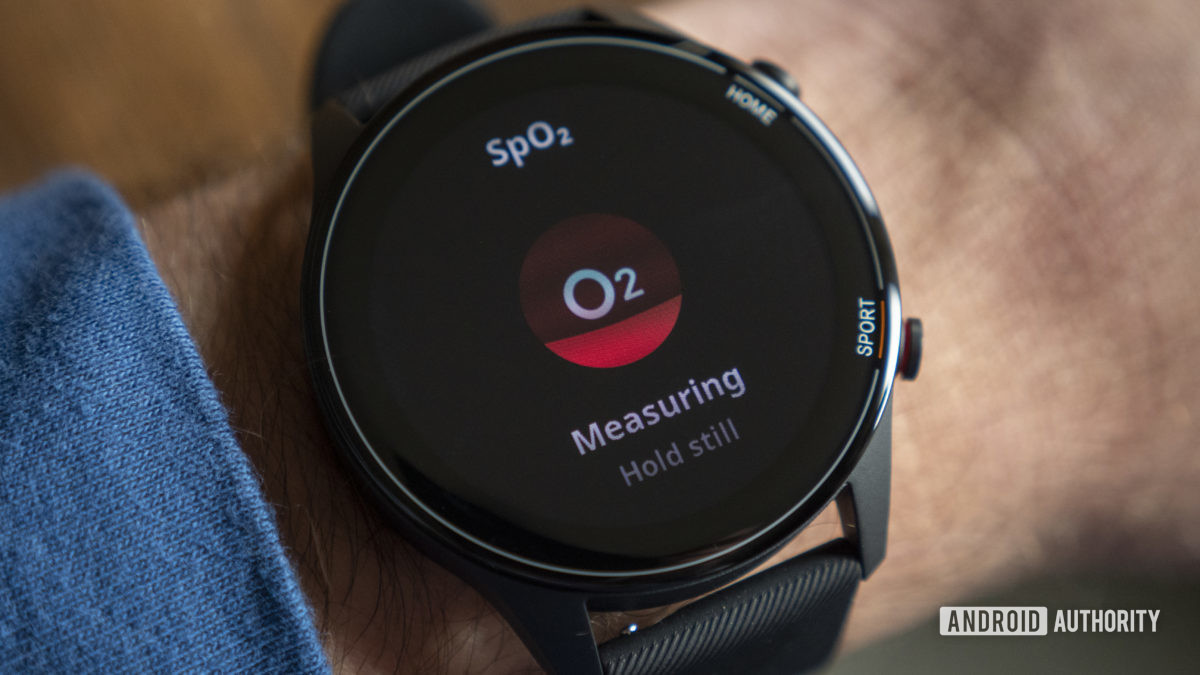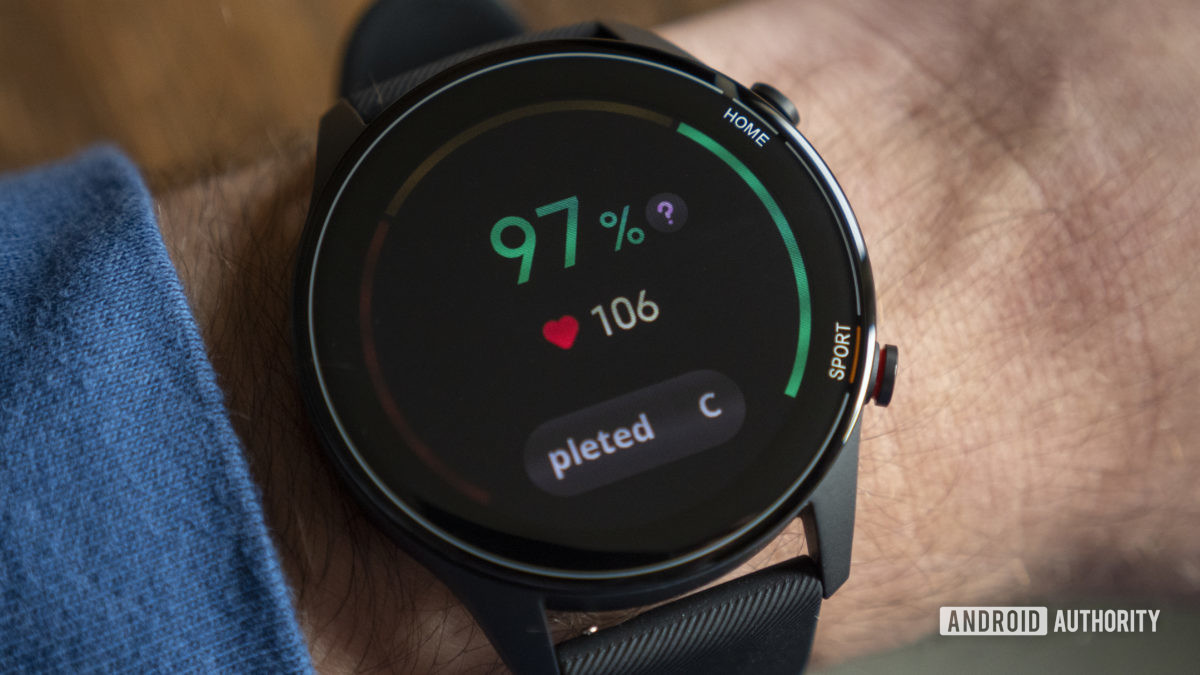You’re probably familiar with Xiaomi’s wearables — the Mi Band line is one of the most popular fitness trackers in history. But surprisingly, the company is still relatively new to the smartwatch world. It has released a few smartwatches in certain regions but most have not made their way outside China.
The Xiaomi Mi Watch is launching globally. This bare-bones, sports-oriented smartwatch offers a basic set of features — and in true Xiaomi fashion — an affordable price tag. Read our full Xiaomi Mi Watch review to see if this is the right budget watch for you.
What you need to know about the Xiaomi Mi Watch
Xiaomi die-hards might recognize this watch. It’s actually the China-exclusive Xiaomi Mi Watch Color Sports Edition that was announced in October. The wearable has been rebranded to “Xiaomi Mi Watch� for the global audience (not to be confused with the original Mi Watch which debuted in November 2019). It’s also similar to the India-exclusive Xiaomi Mi Watch Revolve but with a sportier design.
The Xiaomi Mi Watch’s main draw is its price point — it costs just €99, which directly competes with devices like the Amazfit Bip S and Fitbit Charge 4.
It has a variety of sports-tracking features, including support for 117 different sport profiles. It comes with onboard GPS, an optical heart rate sensor, sleep tracking, as well as an SpO2 sensor for tracking blood oxygen levels (more on that later).
Xiaomi’s popularity with wearables is primarily thanks to the Mi Band line, so it’s no surprise to see the focus on fitness and health rather than smart features. However, this is still a smartwatch, so can it actually compete with other smartwatches?
What I like about the Xiaomi Mi Watch
Straightforward, no-frills design
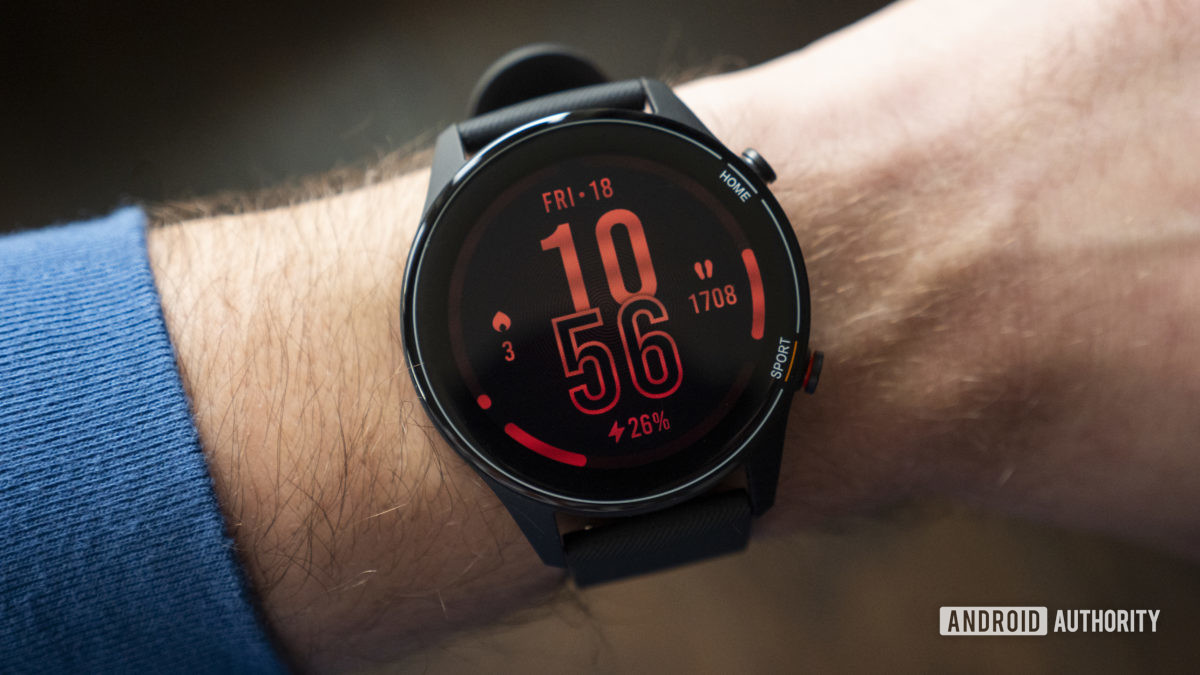
I actually really like the simple, understated look of the Xiaomi Mi Watch. Sometimes, I feel weird about exercising with an Apple Watch or Fitbit Sense because they feel more like high-end watches that I don’t want to put in harm’s way. I don’t get that feeling with the Mi Watch.
The case is made of a soft-touch plastic that’s comfortable and light. There are two pushers on the right side — one that pulls up the all apps screen and another for the workouts. They’re satisfying to press, and I’m always happy to see physical buttons on fitness-focused wearables. Touchscreens are not fun to use while you’re exercising.
I have average-sized wrists and I think the Xiaomi Mi Watch is just the right fit for me, but only just. Anyone with smaller wrists will probably think this watch is too big.
The AMOLED display is crisp and gets very bright. I’ve had no trouble viewing it outdoors in direct sunlight. There’s an ambient light sensor too, so it’ll automatically adjust based on your lighting conditions.
Plenty of activity tracking features
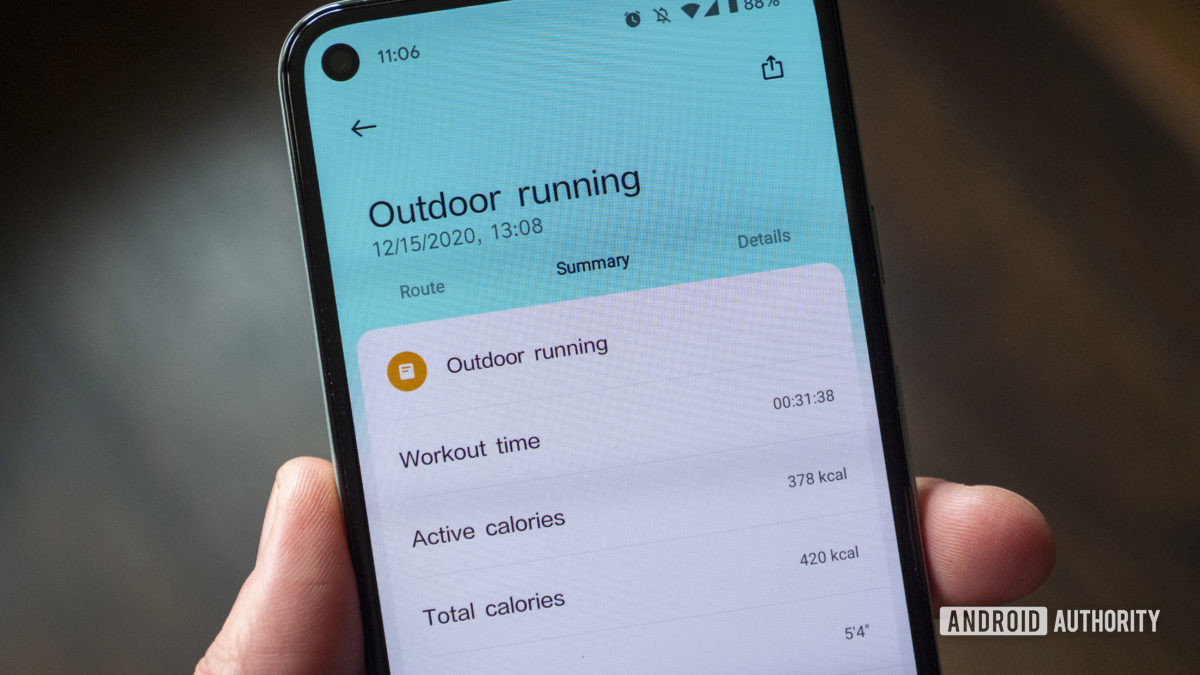
Xiaomi included lots of fitness and health-tracking features in the Mi Watch. It has built-in GPS for accurately tracking outdoor activities, as well as an optical heart rate sensor for all-day heart rate data. We’ll talk heart rate in a bit. For now, let’s start with GPS.
GPS performance is good, not great. The Mi Watch was able to mostly stick to my path on a four-mile outdoor run (see below), though it did veer off into the river at a few points even though there was minimal tree coverage. I wouldn’t hesitate to track my runs with the Mi Watch in the future, although it does take quite a long time to lock onto a signal.
Also, you’ll have to excuse the crude screenshot below. Xiaomi doesn’t let you export data from its app and it doesn’t support Strava uploads. I was therefore unable to export .fit or .gpx files from the watch.
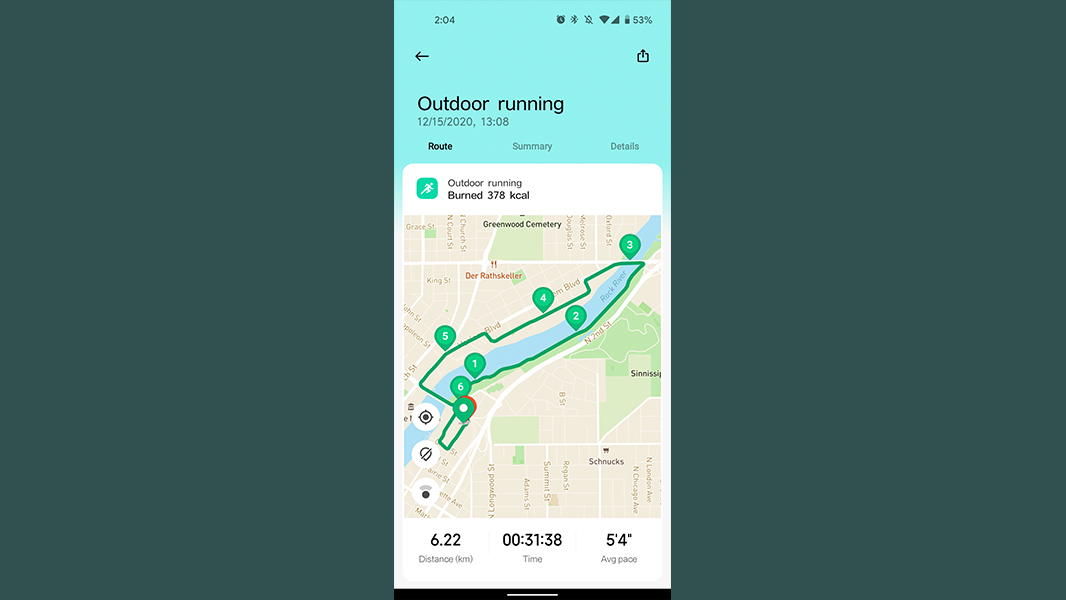
Step tracking and calorie burn were in line with the results from my Fitbit Charge 4 and Garmin Fenix 6 Pro.
Detailed workout analysis from Firstbeat
I have some issues with the way Xiaomi’s new Wear app handles activity data, but post-workout analysis on the watch itself is definitely a positive. Xiaomi is using Firstbeat, the now Garmin-owned analytics company, to provide analysis after you finish an exercise.
After your workout, you’ll see your total time, active and total calorie burn, steps taken, average cadence, pace, speed, heart rate, heart rate zones, training effect, VO2 max, recovery time, and energy consumption, as well as pace, heart rate, and cadence graphs. This is a huge step up from what you’d normally get from your Mi Band.
Also read: Fitbit vs Garmin: Which ecosystem is right for you?
Long-lasting battery life
Xiaomi claims the Mi Watch can last up to 16 days on a single charge. I think it can get close to that, but my usage patterns suggest I’ll get just over two weeks of battery life. This is with the always-on display turned off, tracking a handful of outdoor activities with GPS, all-day heart rate monitoring, and sleep tracking. Turn on the always-on display and you’ll get about a week on a charge.
Sleep tracking
![]()
Sleep tracking is one of the Mi Watch’s strong suits. It keeps track of your deep, light, and REM sleep and displays this information in an easy-to-read graph in the Xiaomi Wear app. Accuracy has been spot-on for what I’ve experienced over the past week, and the Mi Watch has been in line with my Fitbit Charge 4.
If I had one gripe, I think Xiaomi could do a little more explaining on how the sleep score is calculated. You’re awarded 0-100 sleep points each night. However, there’s no indication as to how this score is calculated or how much, say, waking up in the middle of the night affects the overall score.
What I don’t like about the Xiaomi Mi Watch
Underbaked SpO2 sensor
SpO2 sensors — or blood oxygen sensors — are all the rage in 2020. Garmin and Fitbit devices have had them for years. The Apple Watch just got one, so naturally, everyone else is playing catch-up. Unfortunately, these sensors are often underbaked and are nothing more than a flex on the spec sheet.
Taking an SpO2 reading on the watch is simple. Open the SpO2 app, tap Measure, and hold still for about 20 seconds. Afterwards, you’ll get a blood oxygen percentage (likely from 90%-100%) and a heart rate reading during that time. That’s about it. Tap on the “?� icon and you’ll see a long-winded explanation of what SpO2 is.
What do you do when you have a lower-than-normal SpO2 reading? Go do the doctor? Wait it out to see if your levels eventually rise? There is no indication in the Xiaomi Wear app or on the watch itself of how people should use this information once they take a reading. This, unfortunately, is the downfall of cheaply implemented SpO2 sensors this year.
Nevertheless, Xiaomi does claim that its SpO2 sensor is not a medical device. If you’d like to learn more about medically validated SpO2 sensors, check out our coverage of the Apple Watch Series 6, the Withings ScanWatch, and the Fitbit Sense.
Poor heart rate monitoring
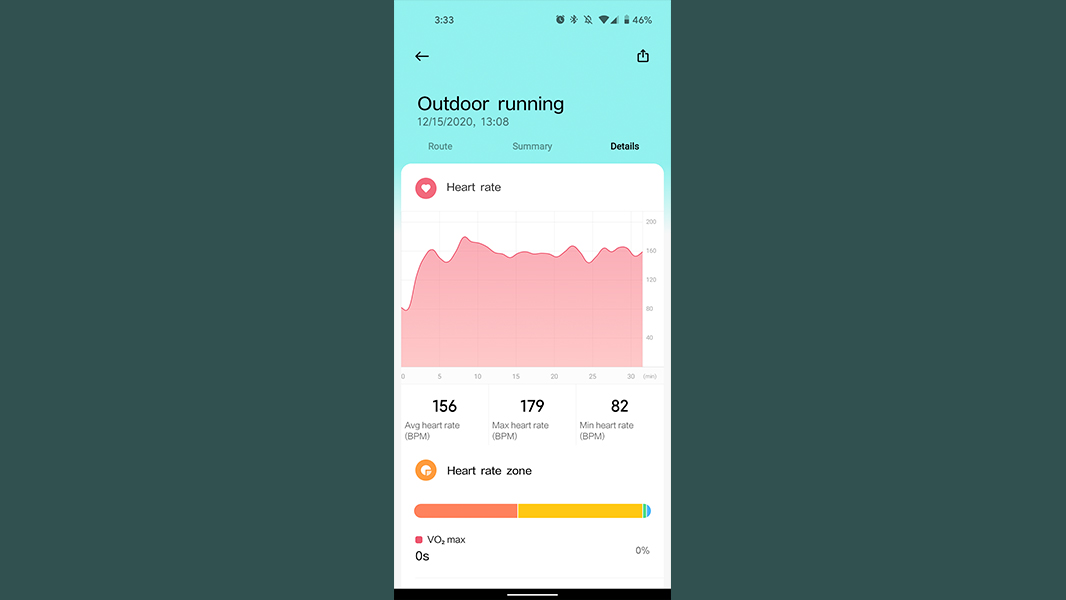
Heart rate performance is, well, very difficult to unpack. Xiaomi’s app is not user friendly if you want to dig into your stats. From what I can tell though, the Mi Watch’s heart rate sensor struggles with higher intensity periods of activity. Multiple high-intensity sprints in this run were almost completely missed by the Mi Watch. When it did manage to lock onto my rising heart rate, it was consistently 10bpm under what my Garmin Fenix 6 Pro was reporting.
Limited smartwatch features

The Xiaomi Mi Watch is a smartwatch in the most basic sense of the word. There are no third-party apps or watch faces. There’s no app store either.
Xiaomi says there are “over a hundred� watch faces available. I count 84 in the Xiaomi Wear app at the time of writing. Unfortunately, none of them are customizable, so what you see is what you get.
The watch will show smartphone notifications, too, but like other cheap smartwatches, they leave a lot to be desired. You can’t reply to messages from the watch, and you can’t even expand emails to read anything more than the subject line. Dismissing notifications from your watch also doesn’t dismiss them on your phone.
To Xiaomi’s credit, there are a handful of basic pre-loaded apps on the watch itself. It comes with an alarm app, a timer, a stopwatch, a weather app, and a “find my phone� feature. Xiaomi also says there’s supposed to be a camera shutter app and Amazon Alexa support, but those aren’t available on my Xiaomi Mi Watch review unit. The company said it’s working to bring the voice assistant to the watch by the end of February 2021.
Related: The best smartwatch deals we could find
Everything could be more polished
There appear to be a handful of translation and conversion issues with the Mi Watch and Xiaomi Wear app. Here are a few that have been bugging me:
- Despite setting my clock preferences to 12-hour time on the Mi Watch, the app doesn’t recognize that preference and shows everything in 24-hour time.
- The app doesn’t let you change units of measurement, so I’m stuck with the metric system when viewing my workout stats. I found this to be a bigger burden than I originally thought. Converting miles to kilometers for distance is one thing, but that also messes up my pace stats.
- As far as I can tell, there’s no option to change from Celsius to Fahrenheit for weather updates.
Xiaomi Mi Watch specs
| Xiaomi Mi Watch | |
|---|---|
| Display | 1.39-inch color AMOLED 454 x 454 resolution 450 nits |
| Dimensions and weight | 45.9 x 53.35 x 11.8mm 32g (without strap) |
| Materials | Case: Plastic Strap: TPU |
| Colors | Case: Black, Navy blue, Beige Strap: Black, Navy blue, Beige, Orange, Olive, Yellow |
| Storage | N/A |
| IP rating | 5ATM |
| Battery | 420mAh ~16 days with standard use |
| Sensors | PPG heart rate sensor (including SpO2) GPS / GLONASS / BDS / Galileo 3-axis accelerometer 3-axis gyroscope Geomagnetic sensor Air pressure sensor Ambient light sensor Compass |
| Connectivity | Bluetooth 5.0 BLE |
| Compatibility | Android 4.4 and above iOS 10.0 and above |
Xiaomi Mi Watch review: Price and competition
The Xiaomi Mi Watch is now available from select retailers and mi.com in Mexico, Indonesia, and Thailand. It will soon be available in Western Europe and in the UK through local retailers and mi.com. We also expect it to arrive on Amazon, so we’ll include a link to that retailer as well.
As cheap as they come
There aren’t many smartwatches that hit the €99 sweet spot, though the Amazfit Bip S comes to mind. It is slightly cheaper than the Mi Watch. However, we did run into quite a few connectivity issues with our unit.
The older Amazfit GTS is also around the same price. You miss out on SpO2 tracking though, and again, connectivity issues were prevalent during our review period.
There’s also the brand new Amazfit GTR 2e. While global pricing details have yet to be announced, Huami’s new affordable watch has many of the same specs as the Mi Watch.
Spend a bit more, and you’ll be in spitting distance of the Fitbit Charge 4, currently our favorite fitness tracker. It’s light on the smartwatch features, but it does have a solid feature set for its size and price point. Plus, it connects to the Fitbit app, which is miles better than the Xiaomi Wear app.
Xiaomi Mi Watch review: The verdict
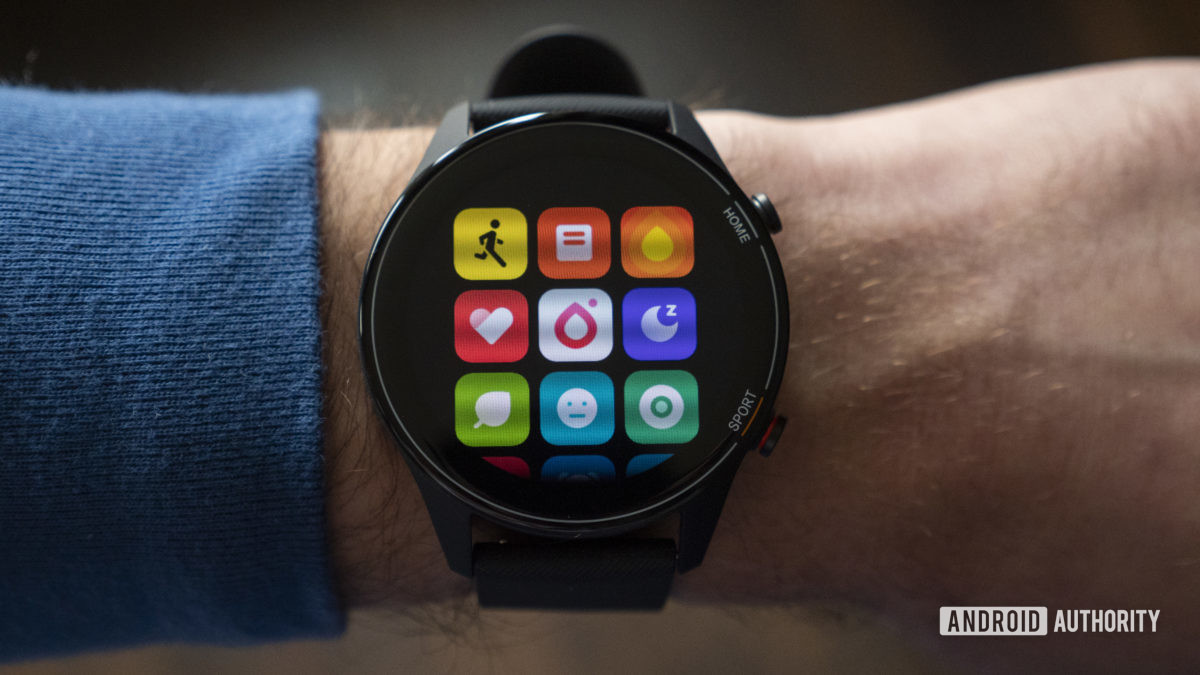
Like almost every single Xiaomi product, the Mi Watch represents one of the best values you can possibly get in this price range. I really don’t think you’ll find a better looking or all-around better experience for €99. The workout analysis data and onboard GPS are big positives you won’t often find on a device this cheap.
However, there clearly are things Xiaomi needs to work out. I’d like to see more smartwatch features and a fully realized voice assistant on the watch. The blood oxygen sensor is too bare-bones to be actually useful too. And for as nice as the Xiaomi Wear app looks, it could use some polishing. Luckily, all of these things can be fixed with software updates.
Ultimately, if you’re looking for a solid, no-frills wearable for €99, you won’t do much better than the Xiaomi Mi Watch.
Next: The best Fitbit smartwatches and fitness trackers you can buy


